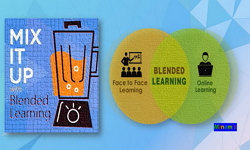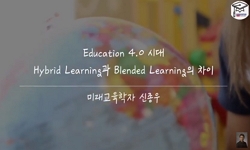Polyvinyl alcohol (PVA) is a non-toxic, water-soluble, biocompatible, and biodegradable synthetic polymer, which is widely used in the biomedical field. As one of the most abundant natural polysaccharides, chitosan is well known for its biocompatible ...
http://chineseinput.net/에서 pinyin(병음)방식으로 중국어를 변환할 수 있습니다.
변환된 중국어를 복사하여 사용하시면 됩니다.
- 中文 을 입력하시려면 zhongwen을 입력하시고 space를누르시면됩니다.
- 北京 을 입력하시려면 beijing을 입력하시고 space를 누르시면 됩니다.

이중전기방사법을 이용한 키토산/PVA 나노섬유 웹과 필름의 제조 및 특성 = Preparation of Chitosan/PVA Nanofiber Web and Film Using Co-electrospinning and Their Properties
한글로보기https://www.riss.kr/link?id=A101872870
-
저자
김은현 (영남대학교) ; 김준호 (영남대학교) ; Kim, EunHyun ; Kim, Joon Ho

- 발행기관
- 학술지명
- 권호사항
-
발행연도
2016
-
작성언어
Korean
- 주제어
-
등재정보
KCI등재
-
자료형태
학술저널
- 발행기관 URL
-
수록면
75-82(8쪽)
-
KCI 피인용횟수
3
- DOI식별코드
- 제공처
- 소장기관
-
0
상세조회 -
0
다운로드
부가정보
다국어 초록 (Multilingual Abstract)
Polyvinyl alcohol (PVA) is a non-toxic, water-soluble, biocompatible, and biodegradable synthetic polymer, which is widely used in the biomedical field. As one of the most abundant natural polysaccharides, chitosan is well known for its biocompatible and biodegradable properties. Blended chitosan/PVA nanofiber webs and films were investigated for applications in the biomedical field. Pure chitosan nanofiber web, blended nanofiber web, and skin-core nanofiber webs were prepared by electrospinning. Chitosan/PVA blended films were prepared by the solution casting method. Scanning Electron Microscope photographs showed that the skin-core nanofiber web (chitosan skin, PVA core) had the best uniformity and was suitable for electrospinning. The PVA, chitosan, and blend films had better hydrophilicity and moisture regain than PVA, blend, and skin/core nanofibers. The FT-IR and DSC analyses demonstrated compatibility between PVA and chitosan. Also, nanofiber web and films with chitosan had better mechanical properties than pure PVA nanofiber web and film; the presence of chitosan reduced the tensile strength of nanofiber webs and films, but increased their Young's modulus. All nanofiber webs showed remarkably similar elongation, and chitosan was shown to reduce the elongation of films. This study concluded that blended chitosan/PVA nanofiber web and films are well suited for applications in medical materials, such as wound dressing.
참고문헌 (Reference)
1 이재호, "키토산/PVA 블렌드 필름의 구조 및 특성" 한국섬유공학회 47 (47): 92-101, 2010
2 X. Chen, "pH Sensitivity and Ion Sensitivity of Hydrogels Based on Complex-forming Chitosan/silk Fibroin Interpenetrating Polymer Network" 65 : 2257-2262, 1997
3 E. Bormashenko, "Why does the Cassie-Baxter Equation Apply?" 324 : 47-50, 2008
4 T. Koyano, "Surface States of PVA/Chitosan Blended Hydrogels" 41 : 4461-4465, 2000
5 H. H. Lim, "Spinning and Properties of Cellulose/Chitosan Blend Fiber" 34 : 444-449, 1997
6 M. Carenza, "Recent Achievements in the Use of Radiation Polymerization and Grafting for Biomedical Applications" 39 : 485-493, 1992
7 J. Hosokawa, "Reaction between Chitosan and Cellulose on Biodegradable Composite Film Formation" 30 : 788-792, 1991
8 W. Y. Chuang, "Properties of the Poly(vinyl alcohol)/Chitosan Blend and Its Effect on the Culture of Fibroblast in vitro" 20 : 1479-1487, 1999
9 J. H. Kim, "Properties and Swelling Characteristics of Cross-linked Poly(vinyl alcohol)/chitosan Blend Membrane" 45 : 1711-1717, 1992
10 M. Hasegawa, "Preparationof Cellulose-chitosan Blend Film Using Chloral/Dimethylformamide" 35 : 983-987, 1994
1 이재호, "키토산/PVA 블렌드 필름의 구조 및 특성" 한국섬유공학회 47 (47): 92-101, 2010
2 X. Chen, "pH Sensitivity and Ion Sensitivity of Hydrogels Based on Complex-forming Chitosan/silk Fibroin Interpenetrating Polymer Network" 65 : 2257-2262, 1997
3 E. Bormashenko, "Why does the Cassie-Baxter Equation Apply?" 324 : 47-50, 2008
4 T. Koyano, "Surface States of PVA/Chitosan Blended Hydrogels" 41 : 4461-4465, 2000
5 H. H. Lim, "Spinning and Properties of Cellulose/Chitosan Blend Fiber" 34 : 444-449, 1997
6 M. Carenza, "Recent Achievements in the Use of Radiation Polymerization and Grafting for Biomedical Applications" 39 : 485-493, 1992
7 J. Hosokawa, "Reaction between Chitosan and Cellulose on Biodegradable Composite Film Formation" 30 : 788-792, 1991
8 W. Y. Chuang, "Properties of the Poly(vinyl alcohol)/Chitosan Blend and Its Effect on the Culture of Fibroblast in vitro" 20 : 1479-1487, 1999
9 J. H. Kim, "Properties and Swelling Characteristics of Cross-linked Poly(vinyl alcohol)/chitosan Blend Membrane" 45 : 1711-1717, 1992
10 M. Hasegawa, "Preparationof Cellulose-chitosan Blend Film Using Chloral/Dimethylformamide" 35 : 983-987, 1994
11 M. Avella, "Poly-d-(−)(3-hydroxybutyrate)/poly(ethylene oxide)Blends : Phase Diagram, Thermal and Crystallization Behaviour" 29 : 1731-1737, 1988
12 S. S. Ojiha, "Fabrication and Characterization of Electrospun Chitosan Nanofibers Formed via Templating with Polyethylene Oxide" 9 : 2523-2529, 2008
13 N. Bhattarai, "Electrospun Chitosan-based Nanofibers and Their Cellular Compatibility" 26 : 6176-6184, 2005
14 Z. G. Chen, "Electrospinning of Collagen-chitosan Complex" 61 : 3490-3494, 2007
15 B. Duan, "Electrospinning of Chitosan Solutions in Acetic Acid with Poly(ethylene oxide)" 15 : 797-811, 2004
16 S. Salmon, "Crystal Morphology, Biosynthesis, and Physical Assembly of Cellulose, Chitin, and Chitosan" 37 : 199-263, 1997
17 H. M. Kumar, "Compatibility Studies of Chitosan/PVA Blend in 2% Aqueous Acetic Acid Solution at 30 oC" 82 : 251-255, 2010
18 T. T. Nguyen, "Coaxial Electrospun Poly(lactic acid)/chitosan(core/shell)Composite Nanofibers and Their Antibacterial Activity" 86 : 1799-1806, 2011
19 A. L. Yarin, "Coaxial Electrospinning and Emulsion Electrospinning of Core-shell Fibers" 22 : 310-317, 2011
20 W. Park, "Characterization of Chitosan-treated Wool Fabric(1)-Antimicrobial and Deodorant Activities" 33 : 855-860, 1996
21 M. Hasegawa, "Characterization of Cellulose-chitosan Blend Films" 45 : 1873-1879, 1992
22 L. Li, "Carbon Nanotube Induced Polymer Crystallization: The Formation of Nanohybrid Shish-kebabs" 50 : 953-965, 2009
23 D. M. Spori, "Beyond the Lotus Effect : Roughness Influences on Wetting over a Wide Surface-Energy Range" 24 : 5411-5417, 2008
24 H. Seo, "Antibacterial and Antifungal Fiber Blended by Chitosan" Elsevier Applied Science 34-40, 1992
25 M. Kong, "Antibacterial Mechanism of Chitosan Microspheres in a Solid Dispersing System Against E. coli" 65 : 197-202, 2008
동일학술지(권/호) 다른 논문
-
- The Korean Fiber Society
- 신윤숙
- 2016
- KCI등재
-
- 한국섬유공학회
- 김창훈
- 2016
- KCI등재
-
TiO2 하이브리드에 의한 바이오-폴리우레탄 멤브레인 필름의 투습성 향상에 관한 연구
- 한국섬유공학회
- 강승구
- 2016
- KCI등재
-
미분쇄 탄소섬유와 카본블랙으로 강화된 천연고무 컴파운드의 기계적 특성
- 한국섬유공학회
- 함은광
- 2016
- KCI등재
분석정보
인용정보 인용지수 설명보기
학술지 이력
| 연월일 | 이력구분 | 이력상세 | 등재구분 |
|---|---|---|---|
| 2022 | 평가예정 | 계속평가 신청대상 (등재유지) | |
| 2017-01-01 | 평가 | 우수등재학술지 선정 (계속평가) | |
| 2013-01-01 | 평가 | 등재 1차 FAIL (등재유지) |  |
| 2010-01-01 | 평가 | 등재학술지 유지 (등재유지) |  |
| 2008-09-03 | 학술지명변경 | 외국어명 : The Korean Fiber Soceity -> Textile Science and Engineering |  |
| 2008-01-01 | 평가 | 등재학술지 유지 (등재유지) |  |
| 2006-01-01 | 평가 | 등재학술지 유지 (등재유지) |  |
| 2005-03-05 | 학술지명변경 | 외국어명 : The Korean Fiber Soceity -> Textile Science and Engineering |  |
| 2003-01-01 | 평가 | 등재학술지 선정 (등재후보2차) |  |
| 2002-01-01 | 평가 | 등재후보 1차 PASS (등재후보1차) |  |
| 1998-07-01 | 평가 | 등재후보학술지 선정 (신규평가) |  |
학술지 인용정보
| 기준연도 | WOS-KCI 통합IF(2년) | KCIF(2년) | KCIF(3년) |
|---|---|---|---|
| 2016 | 0.13 | 0.13 | 0.15 |
| KCIF(4년) | KCIF(5년) | 중심성지수(3년) | 즉시성지수 |
| 0.17 | 0.17 | 0.29 | 0.02 |




 ScienceON
ScienceON







